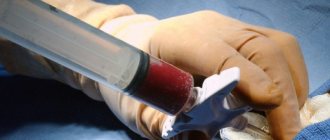Renal rupture is a condition in which the integrity of the elastic fibers of the organ is damaged, accompanied by bleeding into the surrounding tissues and the abdominal cavity, or the kidney is torn away from the renal pedicle that holds it. Renal rupture can be provoked by various physical influences (for example, wounds, trauma, shock) or caused by existing pathologies (for example, hydronephrosis or neoplasm). Depending on the causes of damage to the integrity of the organ, ruptures are divided into traumatic and non-traumatic (or spontaneous). According to the observations of specialists, traumatic kidney ruptures occur more often.
Why does kidney rupture occur? How does this condition manifest itself? What emergency assistance should be provided to the victim? What diagnostic techniques can detect this damage? What treatment is needed for patients with kidney rupture? You will find answers to these questions in this article.
Causes
The anatomical position of the kidneys makes them highly vulnerable.
Due to their anatomical position and structure, the kidneys are quite vulnerable organs. They are very susceptible to external factors, as they are located on the inner surface of the posterior wall of the abdominal cavity and can easily come into contact with the ribs or spinal column. This fact means that the kidney can be easily damaged if hit or dropped. In addition, the very structure of the organ makes it vulnerable: it is bean-shaped and contains many cavities with urine; with a strong shaking, the liquid begins to put pressure on the kidney walls and can cause tissue rupture. More often in the practice of a urologist, traumatic ruptures of the organ occur.
Traumatic kidney ruptures can be caused by the following reasons:
- blows during fights, falls, industrial or transport accidents;
- unsuccessful diving;
- injuries;
- iatrogenic factors: failure of various manipulations or surgical operations (for example, insertion of a catheter into an organ through the ureter during a biopsy).
Spontaneous kidney ruptures are a complication of the following diseases and pathologies:
- benign or malignant kidney tumor;
- kidney cyst;
- acute pyelonephritis;
- hydronephrosis;
- urolithiasis disease;
- kidney infarction;
- hemorrhagic fever accompanied by renal syndrome;
- periarteritis nodosa;
- Wegener's granulomatosis.
According to the observations of specialists, most often organ rupture is provoked by neoplasms, the second most common cause is vascular pathologies of the organ, the third is infectious lesions.
In some cases, conditions such as pregnancy or childbirth can predispose a kidney to rupture.
When a kidney ruptures, the following damage may occur:
- rupture of the subcapsular tissues of the organ without damaging the integrity of the renal pelvis and calyces, accompanied by the formation of a subcutaneous hematoma;
- ruptures of the fatty and fibrous capsule of the organ with the formation of a hematoma in the perinephric tissue;
- crushing of the organ (may be combined with damage to the integrity of the peritoneum);
- violation of the integrity of the parenchyma, accompanied by damage to the renal pelvis and calyces, the formation of urohematoma and total hematuria;
- complete separation of the organ from the renal pedicle with isolated damage to the kidney vessels, the formation of large hematomas and preservation of the integrity of the kidney itself.
Types of damage
Today, there is a division of all kidney injuries into closed (otherwise called blunt or subcutaneous) and open (or penetrating).
Closed types of kidney damage are in turn divided into:
- bruises - in this case, multiple hemorrhages occur in the renal parenchyma, there is no macroscopic rupture of the subcapsular hematoma;
- subcapsular ruptures without contact with the pyelocaliceal system - their distinctive feature is the presence of a large subcapsular hematoma;
- rupture of kidney tissue and its fibrous capsule, accompanied by damage to the pyelocaliceal system;
- separation of the ureter, complete or partial damage to the vascular pedicle;
- crushing;
- contusion.
Open kidney injuries are as follows:
- puncture wounds;
- cut wounds;
- bullet wounds;
- shrapnel wounds.
During the diagnostic process, it is also necessary to clarify the location of the damage, which can be as follows:
- body damage;
- damage to the vascular pedicle;
- damage to the upper or lower segments.
In addition, the nature of the injury (isolated, combined), and the presence or absence of complications (with or without complications) are also taken into account.
Symptoms
The severity of symptoms in kidney ruptures depends on the nature of the damage. The insidiousness of this condition lies in the fact that a violation of the integrity of an organ is not always accompanied by severe pain, and a person is often unaware of the presence of this serious consequence of an injury or complication of a disease.
When a kidney ruptures, the following symptoms are usually observed:
- a feeling of sharp and increasing weakness;
- nausea;
- bloody vomiting (sometimes);
- bloating.
Sometimes, due to dysfunction of a ruptured kidney, the patient develops signs of intoxication. However, they are not observed in all patients, since sometimes the second (preserved) kidney copes with the excretory function.
In case of severe organ ruptures, which are accompanied by massive hemorrhage, the victim develops the following more noticeable manifestations:
- blood in urine;
- cold sweat;
- sharp pain in the lumbar region, which often radiates to the area of the shoulder blades, the lateral part of the ribs or to the spinal column;
- hematoma on the skin in the area of the projection of the kidneys;
- a sharp decrease in blood pressure, accompanied by dizziness and pallor.
If the renal wall is completely ruptured, the victim experiences massive bleeding and the urine in the kidney spills into the abdominal cavity. The patient's condition deteriorates sharply, and in addition to the symptoms described above, he develops signs of peritonitis and massive bleeding:
- severe burning in the abdomen;
- severe hypotension;
- tachycardia;
- a sharp increase in temperature.
The condition of such patients is rapidly deteriorating (almost every minute), and in the absence of emergency assistance, death can occur.
Possible consequences of a bruise
Kidney bruise is often accompanied by damage to other organs: lung, intestines. In case of serious injuries, the pelvis and ureter may be torn off, which leads to the filling of the abdominal cavity with blood and urine. If ruptures are not diagnosed in time and measures are not taken, inflammation of the peritoneum (peritonitis) is possible, which is a deadly condition. Without competent and timely measures taken, a person may die. Other complications of a kidney injury may occur:
- sepsis;
- pyelonephritis (and other inflammatory kidney diseases);
- anemia, due to blood loss;
- stones in the kidneys;
- kidney atrophy;
- nephrectomy;
- nephrogenic arterial hypertension;
- pseudoaneurysm;
- renal artery stenosis.
There are many consequences of a bruise. Therefore, medical supervision is necessary under any treatment conditions: at home or in a hospital.
There is no special prevention for kidney injury. The main rule is to be careful and avoid back injuries. In addition, treat diseases of the urinary system, strengthen weak back muscles and lead a healthy lifestyle.
travmoved.com
Possible complications of kidney rupture
The most dangerous consequence of kidney rupture is the death of the victim, which can occur both before and after the operation, the purpose of which is aimed at eliminating the resulting damage to the organ. However, even with a successful surgical outcome, kidney rupture can cause the development of the following complications:
- formation of a urinary fistula;
- repeated bleeding;
- urosepsis;
- suppuration of a hematoma near the kidney;
- formation of urinoma;
- chronic pyelonephritis;
- stone formation.
Urgent Care
Ultrasound helps diagnose renal rupture in many cases.
If there is any suspicion of damage to the integrity of the kidney, the victim should receive the following assistance:
- Call an ambulance.
- Place the patient on a flat surface and ensure immobility. Calm the victim, as stress-induced tachycardia will only increase bleeding and worsen the condition.
- Do not give the patient anything to drink, as drinking liquid will increase the load on the affected organ. Before the ambulance arrives, it is not recommended to take painkillers, sedatives or diuretics.
- Apply cold to the lower back. When using an ice pack, periodically (every 15 minutes) remove it from the surface of the skin to prevent frostbite.
- After the ambulance arrives, tell the paramedics the details of the traumatic situation.
Remember! For any kidney injuries, immediate consultation with a doctor is always necessary, since the risk of massive bleeding and death with such injuries is always present, and only the help of a specialist can prevent the development of these and other dangerous complications.
Diagnostics
The following tests may be performed to detect renal rupture:
- inspection and palpation;
- urine and blood tests;
- Ultrasound of the kidneys;
- MSCT;
- MRI;
- isotope scintigraphy;
- excretory urography;
- retrograde pyelography (in case of functional failure of the damaged organ);
- renal angiography (if damage to large renal vessels is suspected).
The examination plan for the patient is drawn up by the doctor individually and depends on the characteristics of the clinical picture. The data obtained allows us to draw up a plan for further treatment of the patient.
Treatment
The treatment tactics for kidney rupture are determined by the severity of damage to the integrity of the organ.
If there is minor damage to the elastic tissues of the kidney, the patient can only be prescribed a gentle regime and a special diet to accelerate the regeneration of kidney tissue and reduce the load on the urinary system. The diet of such patients includes more animal proteins and limits the consumption of foods that cause increased urination. These measures are often sufficient to restore renal tissue, and the patient’s condition gradually stabilizes. In the absence of ruptures of the renal parenchyma and significant hematomas, the patient may be prescribed conservative therapy:
- compliance with strict bed rest for 14 days;
- taking antibiotics;
- taking hemostatic drugs.
In case of parenchymal ruptures and pronounced or growing hematomas, surgical interventions are performed to eliminate the consequences of organ rupture:
- embolization of a damaged artery is a minimally invasive method that involves the introduction of a sclerosant drug into the lumen of the damaged vessel (the operation can only be performed in specially equipped urological centers);
- suturing ruptures - applying sutures to stop bleeding;
- organ-preserving operations - removal of the damaged part of the organ;
- nephrectomy – complete removal of an organ.
The choice of one or another method of surgical care for kidney ruptures is determined by the clinical case. In most cases, surgeons prefer to perform organ-preserving operations, but their implementation is possible only under certain circumstances.
After completion of surgical treatment, the patient is prescribed symptomatic drug therapy and a course of rehabilitation.
Forecast
Often, kidney ruptures cannot be avoided without surgical intervention.
With uncomplicated kidney ruptures, which are not accompanied by bleeding, and timely provision of qualified assistance, the prognosis for damage is usually favorable. Performing surgery for complicated ruptures also gives positive results in most cases. With massive bleeding and untimely provision of assistance, death may occur. That is why any suspicion of kidney injury should be the reason for an immediate comprehensive and detailed examination of the victim.
Types and types of bruise
Most often, patients with this diagnosis are athletes or people injured in road accidents. As for the specific area of damage, it could be:
- upper segment;
- lower segment;
- kidney body;
- vascular pedicle.
What matters is the direction and force of the blow, where it was concentrated or applied, the location of the kidney, the development of the muscles and subcutaneous fat of the victim, the relationship of the kidney with the ribs, the degree of intestinal filling, retroperitoneal pressure, and more.
The injury can also be classified as uncomplicated or complicated.
Which doctor should I contact?
If you experience lower back pain, hematomas in the area of the kidneys, severe and increasing weakness, blood in the urine, or increased temperature, you should call an ambulance to transport the patient to a hospital with a urology department. Further observation of the patient is carried out by a urologist or surgeon. After an examination (ultrasound, MSCT, MRI of the kidneys, urine analysis, etc.), the doctor will draw up a plan for further treatment, which, depending on the clinical case, can be either conservative or surgical.
Renal rupture is accompanied by damage to the integrity of its elastic fibers, the formation of a hematoma and internal bleeding into the abdominal cavity or complete separation of the organ from the renal pedicle. This life-threatening condition always requires a comprehensive examination of the victim and immediate medical assistance. Treatment of renal rupture can be conservative or surgical. Its tactics are determined by the degree of organ damage, which is determined after a series of instrumental studies (ultrasound, MSCT, MRI, etc.).
Rating: (votes - 1 , average: 5.00 out of 5)
1.General information
In medicine, a hematoma is a bruise (formed as a result of traumatic damage to small vessels), subcutaneous volumetric hemorrhage, or, to put it simply, an ordinary bruise. However, a lot depends on the exact area in which such a cluster formed and what its further dynamics are.
The tendency to hemorrhage into adjacent tissues is one of the distinctive features of trauma to the urinary system. Specific features of nephrotrauma also include severe pain syndrome (which is almost always observed with a kidney injury), certain difficulties with urination, and deterioration in the general condition of the victim. The body seems to be ringing the alarm bell: organs that should remain inviolable under any circumstances are damaged.
Kidney injuries, however, are the third most common among all documented injuries. Mechanical damage to this natural and irreplaceable blood filter is fatal in a significant percentage of cases. And a kidney hematoma, therefore, is not at all the same as a “regular” bruise.
A must read! Help with treatment and hospitalization!










